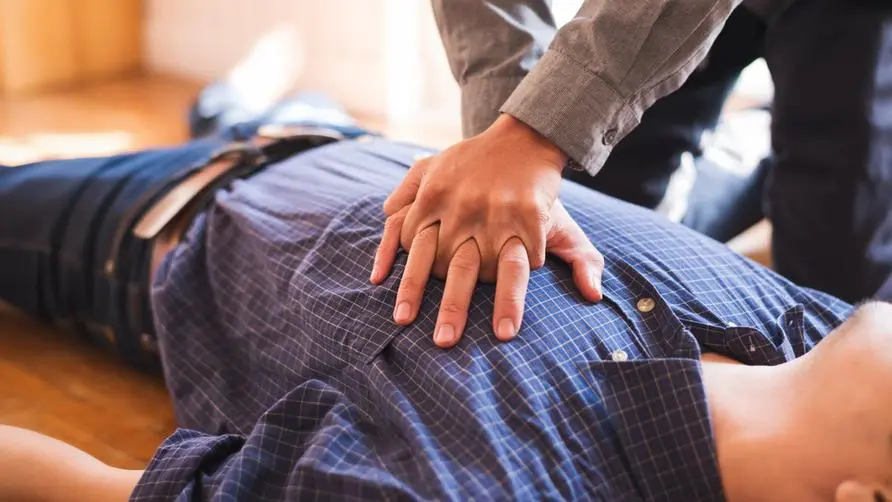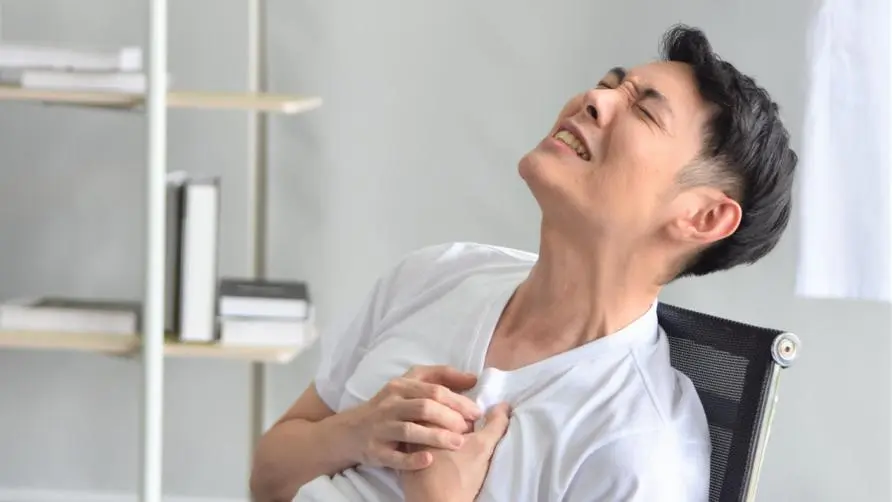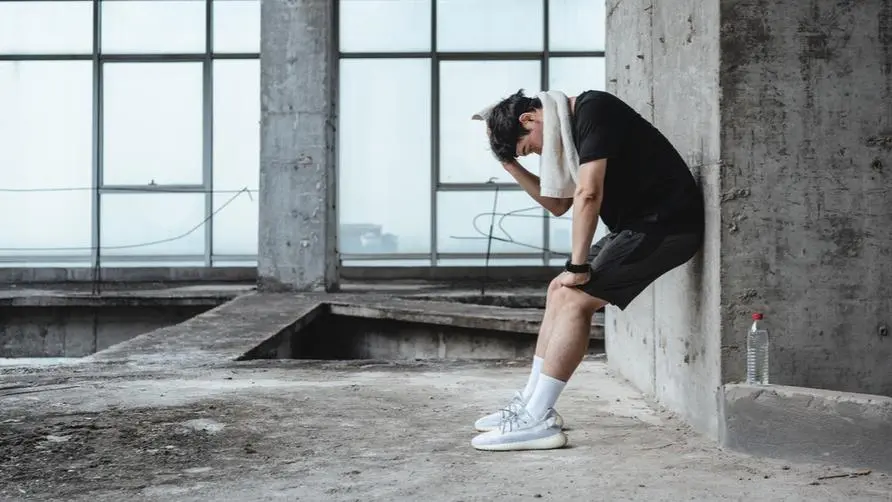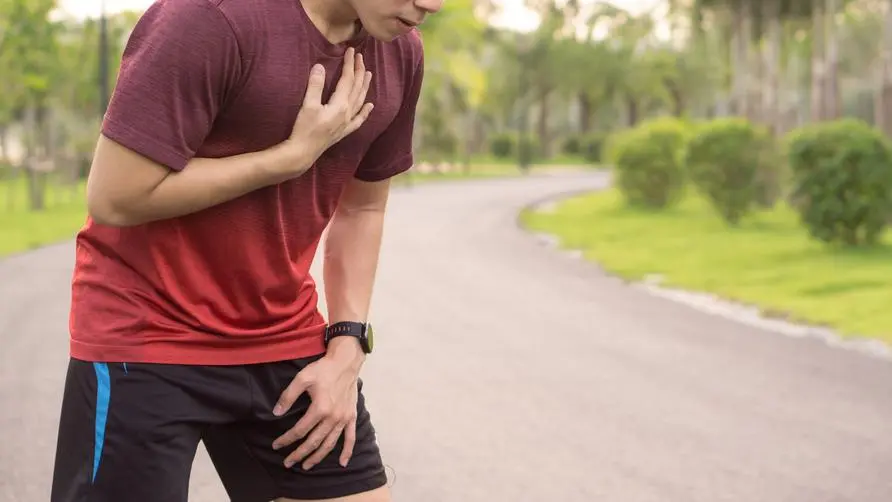What should you do if your family suddenly falls to the ground when the cold snap hits? Doctors teach emergency life-saving "4 steps" to prevent sudden death

Last weekend (17th-18th), a cold wave hit Taiwan, causing 68 sudden deaths in just one day. The speed of accidents is hard to guard against. Cardiovascular problems caused by cold snaps and excessive temperature differences are not only prone to occur in high-risk groups such as the elderly, patients with high blood pressure, smokers, drinkers, or obese people! Dr. Huang Xuan, an expert in critical care medicine, warned that young people usually have “five habits” that they cannot change, and they are also easily exposed to fatal crises when the cold wave hits.
Are high risks not limited to smoking, obesity, and the elderly? Adhering to “5 Habits” in Winter May Be a Killer
Dr. Huang Xuan pointed out that a past review survey in the United States showed that on average, 80% of young people who died of sudden death at the age of 36 had coronary artery stenosis, and it was more likely to occur in people aged 18-59, of which 43% were aged 18-39 and 40-40%. It is 39% for those aged 59 years. A retrospective survey in Portugal shows that more than 50% of sudden death cases among people with an average age of 37.36 years are caused by cardiovascular obstruction (92.5% of men and 7.5% of women); in the case of sudden death of young women, it is doubtful whether it is cardiovascular obstruction. Congenital heart disease, such as Long QT syndrome.
In addition to typical high-risk groups such as obese people, patients with high blood pressure, and smokers, young people who appear to be in good health may also increase the risk of sudden death if they develop the following “five bad habits”:
Habit of overeating. In winter, young people eat too much, are too full, and eat high-fat and high-sugar foods. A large amount of blood will flow to the digestive system, which can easily lead to a sudden increase in cardiac load and sudden contractions, causing heart disease. Discomfort. Once the cardiovascular circulation is not smooth, it is more likely to induce acute myocardial infarction.
Lack of exercise. If office workers exercise less than 150 minutes a week, they may have become a “hidden” high-risk group. The WHO has long pointed out that lack of physical activity has become the fourth risk factor for global mortality; 6% of annual mortality is related to lack of exercise, second only to high blood pressure (13%), smoking (9%) and Hyperglycemia (6%).
Take a bath/get drunk after a meal. After a meal, a large amount of blood accumulates in the intestines and stomach, and other organs of the body will be relatively lacking in blood circulation. If you take a bath when you have just eaten, and it is a cold winter, when the temperature of the bath water is relatively high, it will cause the blood vessels throughout the body to dilate, the blood flow to the skin and muscles to increase, and the cardiovascular fluid circulation load to increase. It is also easy to increase the risk of sudden death.
Emotional fluctuations are large. When the pressure in life or work is too high, the sympathetic nerves are prone to be in an over-excited state, and the immune system is suppressed, causing the pressure to become even greater, thus creating a vicious cycle. Previous research results have pointed out that people who lack sleep are at a higher risk of inducing sudden cardiovascular death-related diseases.
The cold has not been cured yet. Don’t treat a cold as a trivial matter! The common cold can also cause sudden death in winter. Dr. Huang Xuan said that if the virus invades the myocardium, it may cause myocarditis, or induce severe arrhythmia or heart failure. If you have palpitations, chest tightness, chest pain, edema of hands and feet, or syncope when you catch a cold or 1-3 weeks later, you must seek medical attention immediately.
Sudden death in winter is most likely to occur “here”! Critical care doctors must learn the “4 steps” to save lives
Is the most likely place for sudden death in winter to occur in your own room? Dr. Huang Xuan said that past studies have shown. Sudden deaths occurred mostly in self-owned homes (70%), with relatively low rates in other places such as public places (18.8%) and nursing care institutions (11.2%). The possible reason is that in public places, the chances of getting first aid are relatively high; but if you are faced with the risk of sudden death at home, people who live with you often know little about first aid measures.
Therefore, during high-risk moments such as cold snaps, people must pay more attention to the importance of “first aid”. The time to rescue patients with sudden death is very short, and the survival rate of sudden death drops by 10% every minute; and as long as the heart stops for more than 6-8 minutes, it may be difficult to save. Therefore, if you encounter a family member or someone you live with who suddenly becomes unconscious, remember not to panic and follow the 4 first aid steps of “Calling Piezo” one by one:
Call the patient. The first step in first aid is never chest compressions or electric shocks, but “calling” to make sure the patient is breathing and responding when called.
Call someone else to dial 119. Or ask others to help with first aid, and quickly find and remove the Automated External Defibrillator (AED).
Chest compression (CPR). Before chest compression, first untie the patient’s clothes and first confirm whether there are any foreign objects around the patient’s chest compression position and in the mouth. The most ideal rescue position is for the rescuer to kneel next to the patient in a high kneeling position, with the knees and shoulders the same width, and the buttocks should not touch the calves.
When performing chest compression to rescue, place the heel of your palm in the middle of the line connecting the patient’s two nipples, and then press down 5 cm with your elbow straight. During the process of applying pressure, your elbows must not be bent. You should rely on the strength of your body to press up and down, with a compression frequency of 100-120 times per minute and 2 times per second.
“Electric” shock. That is, using an AED to shock the patient. When someone else is turning on the AED, do not stop pressing your chest. After turning on the AED power, stick it to the designated position on the patient’s body according to the instructions on the instrument, and then deliver the electric shock; stay away from the patient during the electric shock. After the electric shock is completed, return to step 3 and continue to compress the chest. During this process, the AED may ask the rescuer to stay away from the patient and analyze the patient’s heart rhythm.
Finally, Dr. Huang Xuan advises the public that in the event of an emergency, they can install the “National Emergency AED” app developed by the Taiwan Ministry of Health and Welfare in cooperation with the Taiwan Medical College of Emergency Medicine. After opening the app, they can assist in dialing 119 immediately. , provide the AED location closest to the scene, and immediately provide teaching on first aid procedures, including movements, and the rhythm of chest compression during first aid.
Source:
“When the weather gets cold, young people are prone to sudden death” - Dr. Huang Xuan
Further reading:





